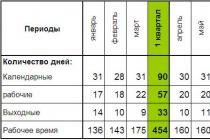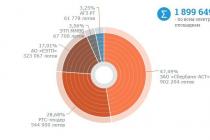Honor 8 specifications
- Body materials: metal, glass
- Operating system: Android 6.0, EMUI 4.1
- Networks: GSM / EDGE, UMTS / HSDPA, LTE (nanoSIM)
- Screen: IPS LCD, diagonal 5.2 ", resolution 1920x1080 pixels (FullHD), ppi 423, Gorilla Glass 3
- Platform: HiSilicon Kirin 950
- Processor: eight-core, 64-bit, 4 cores 2.3 GHz (Cortex-A72) and 4 cores 1.8 GHz (Cortex-A53)
- Graphics: Mali T880 MP4
- RAM: 4 GB
- Storage memory: 32/64 GB
- Memory card slot: yes, microSD (instead of a second SIM card)
- Main camera: two modules of 12 megapixels, f / 2.2, laser autofocus, dual LED flash
- Front-camera: 8 MP, f / 2.4
- Interfaces: Wi-Fi Dual-Band, Bluetooth 4.2 (A2DP, LE), NFC, IrDA, connector USB Type-C(USB-Host) for charging / synchronization, 3.5 mm jack for headset / headphones
- Navigation: GPS (support A-GPS), Glonass
- Optional: fingerprint scanner, accelerometer, light sensor, proximity sensor
- Battery: 3000 mAh, fast charging
- Dimensions: 145.5 x 71 x 7.5 mm
- Weight: 153 grams
Positioning
In July of this year, a smartphone called Honor 8 (a sub-brand of Huawei) was announced. It seems to me that the device is, first of all, interesting from the point of view appearance: Front and back uses 2.5D mirrored glass, side edges are made of metal, and there are several bright colors. Naturally, it is better to see once than to read about Honor 8 in the text or look at it on the Internet.
We find iridescent glazed back and the chassis is slightly curved to match the shape of the arm. Spina wins so sober, there is a dual camera system. So the family look with other models from the Chinese manufacturer is obvious.
Coincidence of technical characteristics
While waiting for a full test of the smartphone, it seemed interesting to meet competitors through a table summarizing their technical characteristics.
His main argument: price
Of course, it is difficult to read simple fact sheets to get a clear opinion on the winner, if there is one. Most phones have more or less the same screen definitions, the same battery capabilities, or the same cameras.From point of view technical characteristics everything is fine here: and powerful processor, and sea" random access memory, and a capacious battery. It is worth mentioning separately that Honor 8 inherited a dual camera from Huawei P9. Of course, it is simpler, but it performs the main functions well: blurs the background and expands dynamic range.
The positioning of this model is simple - the flagship among the Honor line for those who are interested not only in the parameters, but also in the design of the device.
Comparison of technical characteristics
![]()
But the most important selling point is obviously its price. The similarities with other models made in China are obvious.
Main advantage: price
Most phones have more or less the same resolution, the same battery capacity, and the same camera bays.But the price is not the same, and the clientele of the young Chinese manufacturer is said to be willing to invest that much. The point, however, is that it may indeed appear higher - this is, of course, a shortcut.
Honor Smartphone 8 with 32 GB of internal memory costs 28,000 rubles, with 64 GB - 30,000 rubles.
Design, dimensions, controls
I can confidently say that the novelty is the most beautiful among all Honor smartphones, if not among all Huawei gadgets. Yes, there are some features in it. Samsung Galaxy S6 / S7, in particular, has a mirrored "back", but it is made even more original if we talk about the pattern and mirroring. I had a version of blue on my test - an amazing color that does not lose brightness either in the light or in the shade. For example, my emerald Samsung Galaxy S6 appeared black in low light conditions and pale green in the light.




The Honor 8 has only four colors: white, black, gold and blue.

It is also worth noting that fingerprints are almost invisible, there are no greasy spots on the surface, the oleophobic coating is of excellent quality from both the front and back sides. The finger glides over the surface smoothly and quickly. A logical question: if the surface is slippery, then the phone as a whole should slip out of your hands? To my surprise, for several weeks of active use, I did not have a single case when the device could fly out of the palm of my hand. However, the smartphone slides down an inclined plane, especially if vibration is turned on for notifications and calls. Due to the sloping glass bezel, the Honor 8 also does not hold on to some stands. In any case, if something does not satisfy you, there is always an opportunity to purchase a cover. For example, I specifically bought a case for the Galaxy S6, because the device was so grimy that it was a shame to use it.
If we are talking about scratches and other damage to the glass, then this is inevitable: in my case, the lower part on the back side slightly rubbed (I put the phone in a holder made of wood), there were also small scratches and one deep scratch. There are no scratches or chips on the front panel.
The sides are made of metal, they are matte and painted in the color of the phone. During the "skid" they did not rub, and external defects did not appear. The sides have thin polished edges, also painted in the color of the device.
The smartphone is made from environmentally friendly materials, complies with the requirements of the RoHS (Restriction of Hazardous Substances) and REACH (Registration, Evaluation and Authorization of Chemicals) directives - a European Union regulation that regulates the production and circulation of all chemical substances)
Dimensions Honor 8 - 145.5 x 71 x 7.5 mm, weighs 153 grams.




In the hand it lies like a glove due to rounded corners, sloping edges, a thin and light body. In terms of design ergonomics, Honor is doing great.




On top of the front of the gadget there are a camera, sensors, an indicator of missed messages and a speech speaker. The speaker is loud, but, alas, there is no reserve. The timbre is pleasant, the interlocutor is heard clearly and legibly.

At the bottom - 3.5 mm, USB Type-C (unfortunately, 2.0, not 3.0), microphone and speakerphone. Above is a second microphone and an IR transmitter.


On the left are metal skids for two nano-SIM or nano-SIM + microSD. On the right - a power button with a raised surface and a volume rocker key. Made of metal.

On the reverse side there are two camera "eyes", laser autofocus illumination, dual LED illumination of warm and cold glow and a round fingerprint scanner, slightly recessed into the body. It is also a mechanical button.




In the settings, it is set with one click, double or long. The fingerprint sensor functions quickly, there were no problems.



Honor 8 and Apple iPhone 5

Display
This device uses a 5.2-inch screen. The physical size is 64x114 mm, the frame at the top is 15 mm, at the bottom - 16 mm, on the right and left - about 3.5 mm each. There is an effective anti-reflective coating.
Honor 8 display resolution - FullHD, that is, 1920x1080 pixels, aspect ratio - 16: 9, density - 423 pixels per inch. Matrix IPS (LTPS LCD TFT) without air gap.
The maximum white brightness is 400 cd / m2, the maximum black brightness is 0.47 cd / m2, the contrast is 850: 1.




The brightness graph is within the normal range, the gamma is excellent (around 2.13), judging by the color levels, there is an obvious dip in red, the temperature is in the range of 9100 - 9900 K. The obtained data exceeds the values of the sRGB triangle. This suggests that the colors will be saturated and very vibrant.





The matrix of Honor 8 has excellent performance, the only drawback is that the black values are somewhat overestimated, that is, the black color is not pure.
The device has an eye protection mode that reduces the level of UV radiation of the screen, prevents eye fatigue during prolonged use of the smartphone.




Viewing angles

Flare

Battery
This model uses a 3000 mAh non-removable lithium-ion (Li-Ion) battery.
In my operating mode, the gadget functioned for 16-18 hours: about 30 minutes of calls, constant synchronization with Wi-Fi (9.00 to 02.00, Twitter, mail, Skype, Whatsapp), 4-6 hours of LTE. The screen glow in this mode is 3.5 hours.
With games, the situation is a little worse: the battery runs out after 3-4 hours of continuous "battle". The video device "spins" for about 7 hours (HD).
“The 3000 mAh battery and Smart Power 4.0 energy-saving technology provide up to 1.77 days of use with normal use and up to 1.22 days with heavy use. For example, on the Honor 8, you'll be able to watch online videos for 11 hours straight! Technology fast charging 9V / 2A provides 47% charge for 30 minutes. And if you charge the Honor 8 for just 10 minutes, the battery will last for 2 hours of talk time or 6 hours of audio playback. "

















It seems to me that for many users a short screen luminescence time will be critical. In my case, the maximum value was 3.5 hours. In addition, it should be noted that the brightness of the matrix backlight was set to "Auto".
Communication capabilities
The device works not only in 2G (850/900/1800/1900 MHz) / 3G (HSPA + up to 42 Mbps) networks, but also 4G CAT 6:
- 4G TDD LTE: Band 38/40
- 4G FDD LTE: Band 1/3/7/8/20
Now attention! The device was equipped with two radio modules! Frankly, I will not name a single one modern smartphone with such a thing.

The gadget has implemented the "Signal +" function - it improves the quality of signal reception. Another feature is "Wi-Fi +". The gadget automatically connects to the most stable and powerful network (or mobile transmission data or Wi-Fi).















I noticed such an unpleasant feature (again, I don’t know if this is connected with the phone or with the firmware): the device switches to receiving the EDGE signal and does not want to see 4G point-blank. Restarting the phone helps. Fortunately, this rarely happens.
There is also NFC (payment for purchases at the checkout works), the rest is standard for any expensive Android smartphone: GPS and GLONASS, Wi-Fi b / g / n / ac (2.4 and 5 GHz), Bluetooth 4.2 BLE, USB 2.0 with OTG support.
Memory and memory card
RAM 4 GB LPDDR4, and internal memory can be 32 GB or 64 GB. We have a 64 GB version, its read speed is 163 MB / s, write speed is 126 MB / s. Supports memory cards up to 128 GB.
Despite the presence of four gigabytes of RAM, it seems that the phone "eats up" a lot of "operative". A trivial example: a tab is open in the browser, you launch a couple of applications and return to the browser - the page reloads.
Cameras
In this section, it is worth throwing you over to the article about Huawei P9, since it is in it that the essence of the two built-in cameras is considered. The Honor 8 also has dual cameras, dual flashes and laser autofocus. The only difference, it seemed to me, is that the P9 and Honor 8 use different camera modules.
When shooting during the day (12 + 12 MP, f2.2 aperture) on the Honor 8, the dynamic range is widest, you don't even need to turn it on HDR mode: there are practically no dark, undefined areas in the photo, or light ones without information. The colors and white balance are great. Focusing accuracy and speed are high.
With insufficient illumination, it is noticeable that the matrices are weak, noise appears, and the picture may become somewhat soapy. However, even at night, the colors remain juicy and accurate, and the DD is wide.
The Honor 8 smartphone shoots FullHD video at maximum frequency 60 frames. The quality is average, focusing is fast, the sound is clear (stereo).
Selfies (8 MP, f2.4 aperture) are relatively wide-angle (for example, wider in Samsung S6 / S7). The footage comes out ordinary, not to compare with the Huawei P9 Plus. The video is written in 720p.
There is a background blur function. But I practically did not use it, as it does not work very confidently, it often "lathers" the wrong areas.
In the camera settings, you will find manual parameters: shutter speed, ISO, focus, white balance. From the locked screen, press the volume down button twice and get a frame (with autofocus) in just 1.2 seconds!









Sample photos during the day









Sample photo with flash

Examples of photos in low light conditions









Front-camera


Performance
The "heart" of the device is a chipset of its own production - HiSilicon Kirin 950: 16 nm, 64-bit, 8 cores (4x2.3 GHz A72 + 4x1.8 GHz A53), graphics Mali-T880. Needless to say, the Honor 8 is very fast and bug-free. The phone has no problems with games and other applications. Under load, the body of the smartphone practically does not heat up.
Make and model
Information about the brand, model and alternative names of a specific device, if any.
Dimensions (edit): 71 x 145.5 x 7.45 mm | Dimensions (edit): 58.6 x 123.8 x 7.6 mm |
|
| Alternative names | FRD-AL00 FRD-AL10 FRD-DL00 FRD-L04 FRD-L09 FRD-L19 | A1453 A1457 A1518 A1528 A1530 A1533 |
Design
Information about the dimensions and weight of the device, presented in different units of measurement. Materials used, offered colors, certificates.
SIM card
A SIM card is used in mobile devices to store data that certifies the authenticity of mobile service subscribers.
Mobile networks
A mobile network is a radio system that allows multiple mobile devices to communicate with each other.
| GSM | GSM 850 MHz GSM 900 MHz GSM 1800 MHz GSM 1900 MHz | GSM 850 MHz GSM 900 MHz GSM 1800 MHz GSM 1900 MHz |
| CDMA | CDMA 800 MHz (FRD-AL00; FRD-AL10) | CDMA 800 MHz CDMA 1700/2100 MHz CDMA 1900 MHz |
| CDMA2000 | - | 1xEV-DO Rev. A 1xEV-DO Rev. B |
| TD-SCDMA | TD-SCDMA 1880-1920 MHz TD-SCDMA 2010-2025 MHz | - |
| UMTS | UMTS 850 MHz UMTS 900 MHz UMTS 1900 MHz UMTS 2100 MHz UMTS 1700/2100 MHz (FRD-AL00; FRD-AL10; FDR-L04) | UMTS 850 MHz UMTS 900 MHz UMTS 1700/2100 MHz UMTS 1900 MHz UMTS 2100 MHz |
| LTE | LTE 1800 MHz LTE 2100 MHz LTE 2600 MHz LTE-TDD 1900 MHz (B39) LTE-TDD 2300 MHz (B40) LTE-TDD 2500 MHz (B41) LTE-TDD 2600 MHz (B38) LTE 1700/2100 MHz (FRD-AL00; FRD-AL10; FDR-L04) LTE 900 MHz (FRD-DL00) LTE 850 MHz (FDR-L04) LTE 700 MHz Class 17 (FDR-L04) LTE 1900 MHz (FDR-L04) LTE 700 MHz (B12) (FDR-L04) | LTE 700 MHz Class 13 LTE 700 MHz Class 17 LTE 800 MHz LTE 850 MHz LTE 900 MHz LTE 1700/2100 MHz LTE 1800 MHz LTE 1900 MHz LTE 2100 MHz |
Mobile technology and data rates
Communication between devices in mobile networks is carried out using technologies that provide different data transfer rates.
Operating system
An operating system is the system software that controls and coordinates the operation of hardware components on a device.
SoC (System on a Chip)
A system on a chip (SoC) integrates all the major hardware components of a mobile device into a single chip.
| SoC (System on a Chip) | Huawei HiSilicon KIRIN 950 | Apple A7 APL0698 |
| Technological process | 16 nm | 28 nm |
| Processor (CPU) | 4x 2.3 GHz ARM Cortex-A72, 4x 1.8 GHz ARM Cortex-A53 | Apple Cyclone ARMv8 |
| Processor size | 64 bit | 64 bit |
| Instruction set architecture | ARMv8-A | ARMv8-A |
| Level 1 cache (L1) | - | 64 kB + 64 kB |
| L2 cache | - | 1024 kB 1 MB |
| L3 cache | - | 4096 KB 4 MB |
| Number of processor cores | 8 | 2 |
| CPU clock speed | 2300 MHz | 1300 MHz |
| Graphics processing unit (GPU) | ARM Mali-T880 MP4 | PowerVR G6430 |
| Number of GPU cores | 4 | 4 |
| GPU clock speed | 900 MHz | 200 MHz |
| The amount of random access memory (RAM) | 3 GB 4 GB | 1 GB |
| Memory type (RAM) | LPDDR4 | LPDDR3 |
| Number of RAM channels | Two-channel | - |
| RAM frequency | 1333 MHz | - |
| - | M7 motion coprocessor |
Built-in memory
Each mobile device has built-in (non-removable) fixed memory.
Screen
The screen of a mobile device is characterized by its technology, resolution, pixel density, diagonal length, color depth, etc.
| Type / technology | IPS | IPS |
| Diagonal | 5.2 in 132.08 mm 13.21 cm | 4 in 101.6 mm 10.16 cm |
| Width | 2.55 in 64.75 mm 6.48 cm | 1.96 in 49.87 mm 4.99 cm |
| Height | 4.53 in 115.12 mm 11.51 cm | 3.48 in 88.52 mm 8.85 cm |
| Aspect ratio | 1.778:1 16:9 | 1.775:1 |
| Permission | 1080 x 1920 pixels | 640 x 1136 pixels |
| Pixel density | 424 ppi 166 ppcm | 326 ppi 128 ppcm |
| Color depth | 24 bit 16777216 flowers | 24 bit 16777216 flowers |
| Screen footprint | 72.39 % | 61.05 % |
| Other characteristics | Capacitive Multitouch Scratch resistant | Capacitive Multitouch Scratch resistant |
| 2.5D curved glass screen LTPS (Low Temperature PolySilicon) 96% NTSC | Corning Gorilla Glass Retina display 800: 1 contrast ratio 500 cd / m² Oleophobic (lipophobic) coating LED-backlit |
Sensors
Different sensors perform different quantitative measurements and convert physical metrics into signals that can be recognized by the mobile device.
Main camera
The main camera of a mobile device is usually located on the back of the body and is used for photo and video shooting.
| Sensor model | Sony IMX286 Exmor RS | Sony Exmor RS |
| Sensor type | CMOS BSI | CMOS |
| Sensor size | - | 4.89 x 3.67 mm 0.24 in |
| Pixel size | - | 1.498 μm 0.001498 mm |
| Crop factor | - | 7.08 |
| ISO (light sensitivity) | - | 32 - 2500 |
| Diaphragm | f / 2.2 - 16.0 | f / 2.2 |
| Focal length | - | 4.3 mm 30.43 mm * (35 mm / full frame) |
| Flash type | Dual LED | Dual LED |
| Image Resolution | 3968 x 2976 pixels 11.81 megapixels | 3264 x 2448 pixels 7.99 megapixels |
| Video Resolution | 1920 x 1080 pixels 2.07 megapixels | 1920 x 1080 pixels 2.07 megapixels |
| Video - frame rate / frames per second. | 30 frames / sec | 30 frames / sec |
| Specifications | Autofocus Burst shooting Digital zoom Geographic tags Panoramic shooting HDR shooting Touch focus Face recognition Adjusting the white balance ISO setting Exposure compensation Self-timer Scene selection mode Macro mode RAW | Autofocus Burst shooting Digital zoom Digital image stabilization Geographic tags Panoramic shooting HDR shooting Touch focus Face recognition Exposure compensation Self-timer |
| Sensor size - 1 / 2.9 " Pixel size - 1.25 μm Leica camera Laser autofocus 6-element lens Focal length (35 mm equivalent) - 27 mm Secondary rear camera - 12 MP (monochrome) 720p @ 120 fps | 5-element lens IR filter Sapphire crystal glass lens cover 720p @ 120 fps |
Additional camera
Additional cameras are usually mounted above the screen of the device and are used mainly for video calls, gesture recognition, etc.
Audio
Information about the type of speakers and audio technology supported by the device.
Radio
The radio of the mobile device is a built-in FM receiver.
Wi-Fi
Wi-Fi is a technology that enables wireless communication for transferring data over short distances between various devices.
USB
USB (Universal Serial Bus) is an industry standard that allows different electronic devices to exchange data.
Headphone jack
This is an audio connector, which is also called an audio connector. The most widely used standard in mobile devices is the 3.5mm headphone jack.
Connecting devices
Information about other important connection technologies supported by the device.
Browser
A web browser is a software application for accessing and viewing information on the Internet.
Video file formats / codecs
Mobile devices support different video file formats and codecs, which respectively store and encode / decode digital video data.
Battery
Mobile device batteries differ in their capacity and technology. They provide the electrical charge required for their function.
| Capacity | 3000 mAh | 1560 mAh |
| Type of | Li-polymer | |
| Talk time 2G | 20 h 1200 minutes 0.8 days | 10 h 600 minutes 0.4 days |
| Standby time 2G | 420 h 25200 mins 17.5 days | 250 h 15000 minutes 10.4 days |
| Talk time 3G | 20 h 1200 minutes 0.8 days | 10 h 600 minutes 0.4 days |
| 3G standby time | 420 h 25200 mins 17.5 days | 250 h 15000 minutes 10.4 days |
| 4G standby time | 420 h 25200 mins 17.5 days | - |
| Adapter output power | 9 V / 2 A | - |
| Specifications | Fast charging Non-removable | Non-removable |














